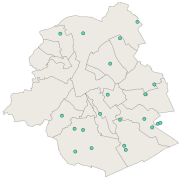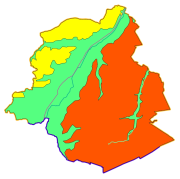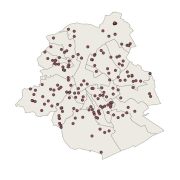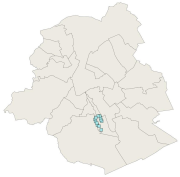groundwater
Type of resources
Available actions
Topics
INSPIRE themes
Keywords
Contact for the resource
Provided by
Formats
Representation types
Update frequencies
status
Scale
Resolution
-

This dataset corresponds to water springs. It is made of one geometric classe : the location of water springs in the Brussels-Capital Region.
-

This dataset corresponds to the piezometry of the phreatic system in the Brussels-Capital Region. It is made of four geometric classes: piezometric levels in the Brussels phreatic system, phreatic level heights, phreatic level depths, and phreatic level depths (HD).
-

This dataset corresponds to the groundwaterbodies in the Brussels-Capital Region, in accordance with Directive 2000/60/EC of the European Parliament and of the Council of 23 October 2000 establishing a framework for Community action in the field of water policy (Water Framework Directive). It is made up of one geometric class: groundwaterbodies.
-

This dataset corresponds to impervious surfaces in the Brussels-Capital Region. It is made of three geometric classes : the imperivous surfaces (2022), the sealing rate per built-up blok (2022), and the sealing rate per street surface (2022).
-

Brussels-Capital Region : data on the 5 Groundwaterbody of the Area of Brussels, defined under the Directive and the Ordinance Water : code European, code of Brussels and name of the water mass, hydrographic district
-

This dataset corresponds to authorized groundwater catchments in the Brussels-Capital Region. It is made up of one geometric class: groundwater catchments.
-

Brussels-Capital Region: The nitrate-vulnerable zone is a protected area against the pollution of groundwaters caused by nitrates from agricultural sources. It was designated in accordance with the prescriptions of the European Directive 91/676/EEC, by the Ministerial Order of 25 May 1999.
-
Brussels-Capital Region : The geological model BRUSTRATI3D v1.1 is a set of raster files covering the Brussels-Capital Region. These files contain the roof elevations and the thicknesses of the Stratigraphic Units (SU/BCR) and the Digital Terrain Model (DTM) of the topographic surface used in this model. These rasters have a 10x10m resolution and their reference coordinate system is EPSG 31370 (Belgian Lambert 31370). The documentation relating to the construction oh these data is available at the following addresses (French only): BRUSTRATI3D v1.1 https://document.environnement.brussels/opac_css/index.php?lvl=notice_display&id=10965 BRUSTRATI3D v1.0 https://document.environnement.brussels/opac_css/index.php?lvl=notice_display&id=10964 As the data in this archive is model-based, it may contain errors, inaccuracies and gaps. They should be used with caution and critical thinking. They can in no way replace a field study carried out by an expert. In general, Brussels Environment and the Geological Survey of Belgium cannot, under any circumstances, be held responsible for any damage, direct or indirect, resulting from the use of these data or the impossibility of using them for any reason whatsoever.
-

Brussels-Capital Region: localization of the extraction wells for drinking water in Brussels, run by VIVAQUA. Ranked as protected area 1 of the water extractions (with the drainage gallery)
-
Brussels-Capital Region: The geotechnical maps of Brussels were elaborated by J.P. Dam, under the direction of prof. J. Nuyens, V. Roisin and R. Thonnard of the Université Libre de Bruxelles (ULB) and of the Vrije Universiteit Brussel (VUB), members of the Centre Interuniversitaire pour la Cartographie Géotechnique directed by J. Nuyens (ULB). They were then published at a scale of 1/5000 between 1976 and 1990 by the ‘Institut Géotechnique de l’Etat’ (State Geotechnical Institute). The constituent documents (maps and associated reports) provide an overview of the following points: - tests carried out in the region ; - depth of the water table ; - nature and position of the tertiary substratum ; - nature and strength of the various surface layers; - units with a specific overlay of the formations encountered. Their initial objective was to respond to the needs of the builders for synthetic and easily accessible documentation relating to the subsoil of the Brussels region. The plates and documents provided did not claim absolute precision because of the interpolations and extrapolations necessary for their establishment. The present archive is presented in three forms: - Digitized maps and associated FR/NL explanatory notes .pdf ; - Georeferenced 'raster' maps (lambert 72); - Vector' maps (lambert 72). List of available maps: 31.2.4; 31.2.6; 31.2.8; 31.3.1; 31.3.2; 31.3.3; 31.3.4; 31.3.5; 31.3.6; 31.3.7; 31.3.8; 31.4.7; 31.7.1; 31.7.2; 31.7.3.
 Geobru catalogue
Geobru catalogue